The educational materials listed on this page are about No-Till.
No-till farming is a conservation tillage technique where all of a previous crop's residue is left on the soil surface after harvest. No-till systems are usually managed using specific tools—a conservation planter for row crops or a no-till drill for more narrowly seeded crops. Crop residue on the soil surface helps improve soil health by providing protection against soil erosion, temperature extremes and water evaporation, and adding soil organic matter. If converting to no-till from a traditional tillage system, producers may start with a less drastic change such as strip-, ridge- or zone-till to help increase the soil’s organic matter. No-till farmers have to be more aware of weed control, compaction prevention and seed placement than conventional farmers. Cover crops are often turned under in conventional tillage systems, but adding cover crops to a no-till system improves soil health, provides nutrients and increases soil moisture. Using no-till in organic systems is not as common because residue on the soil surface increases weed pressure. Organic producers can use a roller crimper to flatten cover crops, which creates a mulch that will help suppress weeds. Learn about the impact that tillage has on your soils and various soil conservation options in the Reducing Tillage chapter of Building Soils for Better Crops.
Showing 1-10 of 16 results
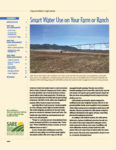
Smart Water Use on Your Farm or Ranch
As producers throughout the nation grow increasingly concerned about water scarcity, farmers, ranchers and agricultural educators are beginning to explore new, conservation-oriented approaches to water use.
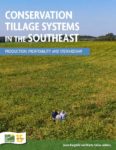
Conservation Tillage Systems in the Southeast
This production manual provides comprehensive guidance on conservation tillage systems for farms in the southeastern United States. It covers the core components of conservation tillage systems and includes both regional considerations and producer experiences.
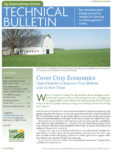
Cover Crop Economics
Cover crops can build soil health, control weeds, conserve moisture, provide grazing opportunities and more. But when do they start to pay for themselves? This analysis looks at the economics behind different management scenarios to determine if cover crops are likely to improve profitability in one, three or five years of use in corn and soybean rotations.

Improving Soil Health Through Cover Crops
Farmers around the country are discovering the power of cover crops to curb erosion and improve soil health. This video is from Pennsylvania, where a Penn State researcher and a grain farmer are partnering to spread the word.

Advanced Cover Cropping Insights from Farmer Experts
Great Plains Perspective Central Corn Belt Perspective Eastern Perspective
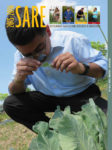
2015/2016 Report from the Field
Read about SARE-funded work in the areas of sustainable dairy cropping systems, soil health assessments, nutrient management, cover crops, beginning farmers, pollinators, technical assistance programs for women farmers, and more. This edition includes highlights of projects funded through the graduate student program, and the highly regarded Sustainable Agriculture Fellowship, a professional development program coordinated by SARE and NACAA.
Establishment Methods for Cover Crops and Cash Crops in Grain Production Systems
Steven Mirsky (USDA-ARS), Greg Roth (Penn State University) and Sjoerd Duiker (Penn State University) discuss common establishment methods for cover crops; the importance of matching the right cover crop species with the right methods; and other topics such as no-till versus tillage; optimal timing of cash crop establishment, drills versus planters, planter and drill attachments and set up; cover crop termination; and planting green.
Farmer Panel on Cover Crops
Farmers Skip Paul (Rhode Island), Jeff Frey (Pennsylvania) and Perry Lilley (Maine) share their experiences with cover crops, including their motivation for using them, successes and challenges, factors that play into decision making around cover crops, and advice for ag service providers who want to encourage farmer adoption of this vital conservation practice.
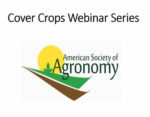
Cover Crop Management and Termination
Planning for proper spring management of your cover crop needs to happen before April. Learn from two experts in the field on a couple different methods for termination.

2014 National Conference on Cover Crops and Soil Health
All session recordings and slide presentations from the National Conference on Cover Crops and Soil Health are available online. Held in 2014 in Omaha, Neb., the event brought together 300 agricultural leaders and innovators to explore how we can make American agriculture more sustainable through improved soil health. Attendees represented agricultural industry, the farm community, academia, government, commodity and conservation organizations.